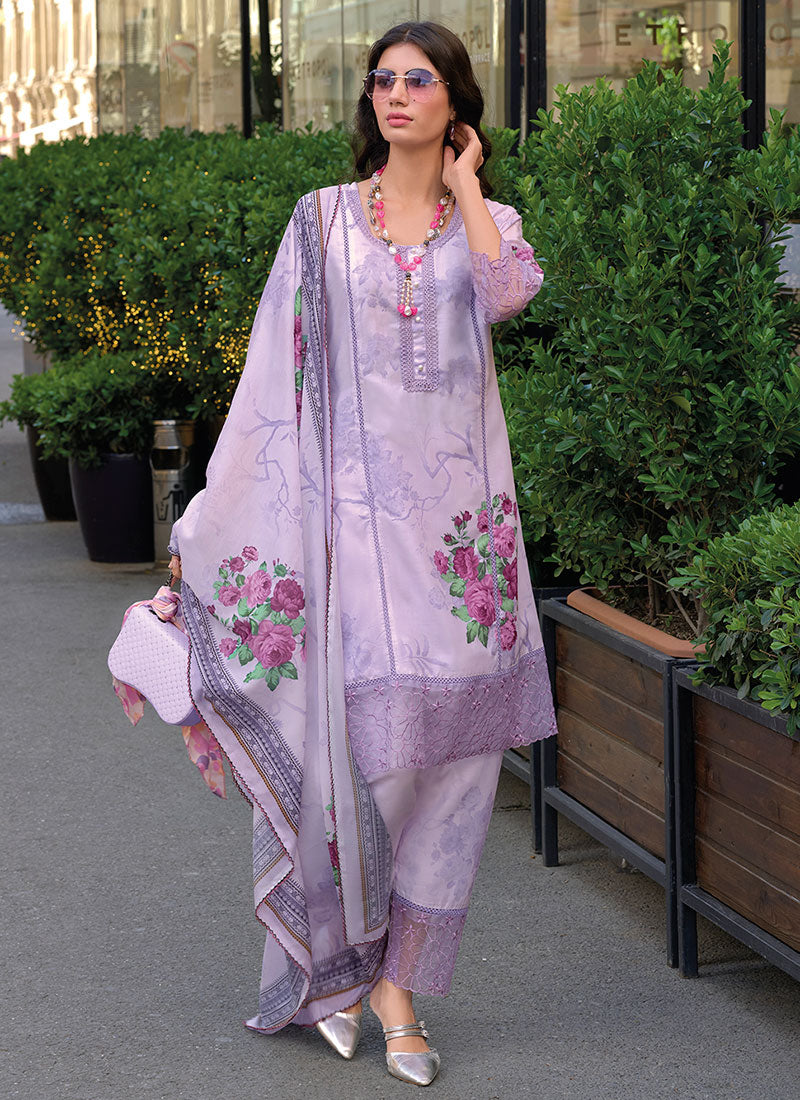The salwar kameez is a traditional and versatile outfit originating from the Indian subcontinent. It consists of three main pieces: the salwar (trousers), the kameez (tunic), and the dupatta (scarf). This ensemble is worn by women across various regions, each bringing its unique flair and cultural significance to the attire. Here’s a comprehensive look at what a salwar kameez is and how to style it.
Understanding the Components
- Salwar: The salwar is a pair of trousers that can vary in style, fitting, and fabric. They are generally wide at the top and narrow at the ankle, with different variations like churidar (tightly fitting from the knees to the ankles) or palazzo (wide-legged and flowing). The salwar is designed for comfort and ease of movement, making it a popular choice for daily wear.
- Kameez: The kameez is a long tunic that can range from knee-length to ankle-length. It features various necklines, sleeve lengths, and fits, depending on regional styles and personal preferences. The kameez is often adorned with intricate embroidery, beadwork, or prints, reflecting the rich textile heritage of the region.
- Dupatta: The dupatta is a long scarf or shawl that complements the salwar kameez. It can be draped over the shoulders, around the neck, or across the body, adding a touch of elegance and modesty. The dupatta is often made of lighter fabric like chiffon, georgette, or silk and can be plain or heavily embellished.
Historical and Cultural Significance
The salwar kameez has deep historical roots, with its origins tracing back to the Mughal era in India. The Mughals brought with them Persian influences, which were blended with Indian styles to create this beautiful and functional attire. Over the centuries, the salwar kameez has evolved, incorporating various regional designs, fabrics, and embellishments.
In South Asia, the salwar kameez is more than just a piece of clothing; it is a symbol of cultural identity and tradition. It is worn on various occasions, from daily wear to formal events, religious ceremonies, and weddings. Each region has its distinct style of salwar kameez, such as the Punjabi suit, Anarkali suit, and Patiala suit, each carrying its unique charm and cultural significance.
Styling a Salwar Kameez
Styling a salwar kameez offers endless possibilities, allowing for personal expression while embracing tradition. Here are some tips on how to style a salwar kameez:
- Choosing the Right Fabric:
- Cotton: Ideal for everyday wear due to its breathability and comfort. Cotton salwar kameez often feature vibrant prints and minimal embroidery.
- Silk: Perfect for festive occasions and weddings. Silk kameez are usually adorned with intricate embroidery and beadwork.
- Georgette and Chiffon: Suitable for formal events and parties. These fabrics drape well and add a touch of elegance to the outfit.
- Selecting the Fit and Length:
- Straight Cut Kameez: A classic choice that suits all body types. It can be paired with churidar or straight salwar.
- Anarkali: A flared, frock-style kameez that is fitted at the top and flows out gracefully. It is a popular choice for weddings and festive occasions.
- A-Line Kameez: Flared from the waist, this style is flattering and comfortable, perfect for casual outings.
- Pairing with the Right Salwar:
- Churidar: Tightly fitting trousers that create a sleek and elongated silhouette. Best paired with long kameez.
- Palazzo: Wide-legged trousers that offer comfort and style. They look great with shorter kameez or kurtis.
- Patiala: Baggy trousers with multiple pleats, providing a traditional and voluminous look. Paired best with a short kameez.
- Accessorizing:
- Jewelry: Traditional jewelry like jhumkas (earrings), bangles, and necklaces can enhance the look. For a modern touch, opt for statement pieces.
- Footwear: Juttis (traditional flat shoes) or heels can be chosen based on the occasion. Juttis add a traditional flair, while heels lend a contemporary edge.
- Dupatta Draping: Experiment with different ways to drape the dupatta. Over one shoulder, around the neck, or as a shawl – each style can change the overall look.
- Hair and Makeup:
- Hairstyles: Classic hairstyles like braids, buns, or loose waves complement the traditional look. For a modern touch, you can opt for sleek ponytails or trendy updos.
- Makeup: Keep the makeup subtle and elegant for daytime wear. For evening events, bold eyes or lips can add glamour to the outfit.
Contemporary Trends
The salwar kameez continues to evolve with contemporary fashion trends, blending traditional elements with modern aesthetics. Designers are experimenting with new fabrics, cuts, and embellishments, making the salwar kameez a fashion-forward choice.
- Fusion Wear: Mixing Western and Indian elements, such as pairing a kameez with jeans or a salwar with a crop top, creates a unique and trendy look.
- Layering: Adding layers like jackets, capes, or shrugs over the kameez adds depth and dimension to the outfit.
- Minimalism: Opting for simple designs with clean lines and minimal embellishments for a chic and modern look.
Conclusion
The salwar kameez is a timeless and versatile outfit that transcends generations and geographies. Its rich history and cultural significance make it a cherished attire, while its adaptability allows for endless styling possibilities. Whether for a casual day out, a festive celebration, or a formal event, the salwar kameez offers comfort, elegance, and a touch of tradition, making it a beloved choice for women across the world.













